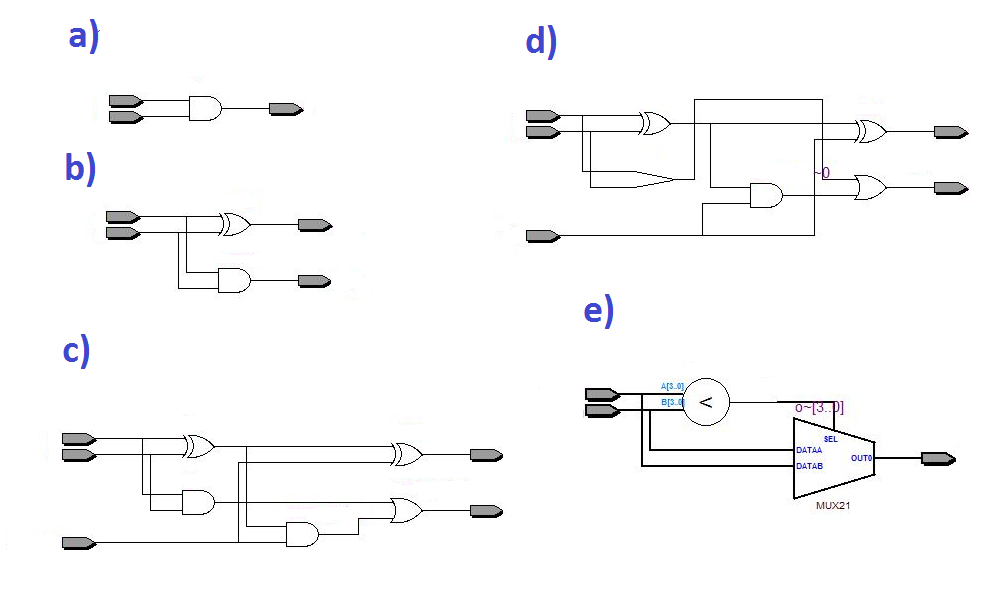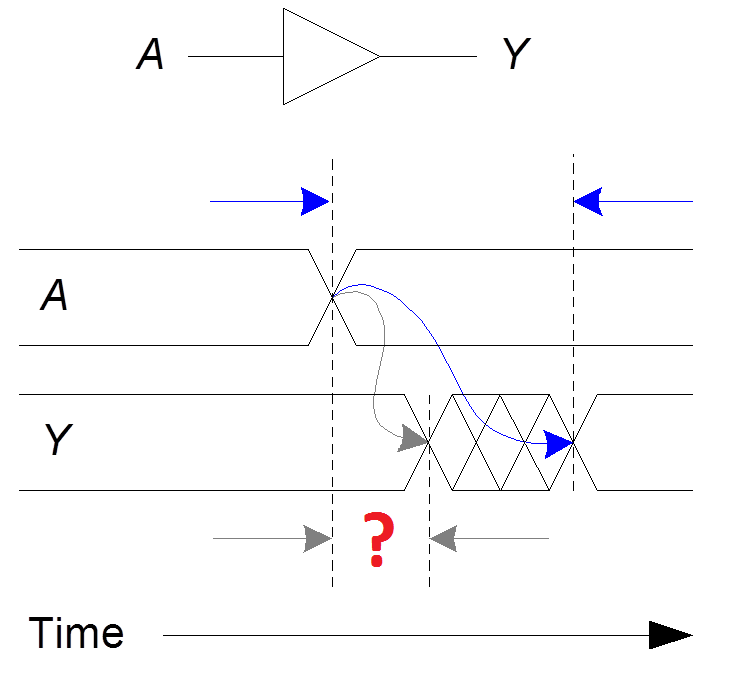EE553 Quiz May 30 2015 Name ____________________________________ Student ID __________________
1. Relative sizes of the industries
a) Electronic industry ~$20T,
Semiconductor / chip making industry ~$30B,
Electronic Design Automation industry ~$80B,
Semiconductor Intellectual Property (SIP) ~$40B
b) Electronic industry ~$2T,
Semiconductor / chip making industry ~$30B,
Electronic Design Automation industry ~$800B,
Semiconductor Intellectual Property (SIP) ~$40B
c) Electronic industry ~$2T,
Semiconductor / chip making industry ~$300B,
Electronic Design Automation industry ~$8B,
Semiconductor Intellectual Property (SIP) ~$4B
d) Electronic industry ~$200B,
Semiconductor / chip making industry ~$30B,
Electronic Design Automation industry ~$8B,
Semiconductor Intellectual Property (SIP) ~$4B
e) Electronic industry ~$200B,
Semiconductor / chip making industry ~$3B,
Electronic Design Automation industry ~$8B,
Semiconductor Intellectual Property (SIP) ~$40B
2. What is the meaning of abbreviation EDA in this course?
a) Enterprise Desktop Alliance
b) Exploratory Data Analysis
c) Electronic Design Automation
3. Which step in EDA Flow is used to make sure the design does not have
functional bugs
a) Simulation
b) Synthesis
c) Place and Route
4. What is the name of the design abstraction which models a synchronous
digital circuit in terms of the flow of digital signals (data) between
hardware registers, and the logical operations performed on those signals?
a) Application-Specific Integrated Circuit - ASIC
b) Field-Programmable Gate Array - FPGA
c) Hardware Description Language - HDL
d) Register Transfer Level - RTL
e) System-on-Chip - SoC
5. Which waveform is the result of the simulation below?
module design (input a, input b, output o);
assign o = ~ a & ~ b;
endmodule
module tb;
logic a, b, o;
design design_inst (a, b, o);
initial
begin
$dumpvars;
$monitor ("%t a %b b %b o %b", $time, a, b, o);
#10;
a = 0; b = 0; #10;
a = 1; b = 0; #10;
a = 0; b = 1; #10;
a = 1; b = 1; #10;
end
endmodule
a)
 b)
b)
 c)
c)
 d)
d)
 e)
e)
 6. What is the result of synthesis of this module?
module design
(
input a,
input b,
output o
);
assign o = a & b;
endmodule
6. What is the result of synthesis of this module?
module design
(
input a,
input b,
output o
);
assign o = a & b;
endmodule
 7. What kind of delay is illustrated on the picture below (marked by "?")?
a) Propagation delay: tpd = max delay from input to output
b) Contamination delay: tcd = min delay from input to output
7. What kind of delay is illustrated on the picture below (marked by "?")?
a) Propagation delay: tpd = max delay from input to output
b) Contamination delay: tcd = min delay from input to output
 Test written by Yuri Panchul
Sources of pictures:
Slides from Steve Harris and Sarah Harris that accompany textbook
Digital Design and Computer Architecture, Second Edition by David Harris and Sarah Harris, 2012
Test written by Yuri Panchul
Sources of pictures:
Slides from Steve Harris and Sarah Harris that accompany textbook
Digital Design and Computer Architecture, Second Edition by David Harris and Sarah Harris, 2012
 b)
b)
 c)
c)
 d)
d)
 e)
e)
 6. What is the result of synthesis of this module?
module design
(
input a,
input b,
output o
);
assign o = a & b;
endmodule
6. What is the result of synthesis of this module?
module design
(
input a,
input b,
output o
);
assign o = a & b;
endmodule
 7. What kind of delay is illustrated on the picture below (marked by "?")?
a) Propagation delay: tpd = max delay from input to output
b) Contamination delay: tcd = min delay from input to output
7. What kind of delay is illustrated on the picture below (marked by "?")?
a) Propagation delay: tpd = max delay from input to output
b) Contamination delay: tcd = min delay from input to output
 Test written by Yuri Panchul
Sources of pictures:
Slides from Steve Harris and Sarah Harris that accompany textbook
Digital Design and Computer Architecture, Second Edition by David Harris and Sarah Harris, 2012
Test written by Yuri Panchul
Sources of pictures:
Slides from Steve Harris and Sarah Harris that accompany textbook
Digital Design and Computer Architecture, Second Edition by David Harris and Sarah Harris, 2012